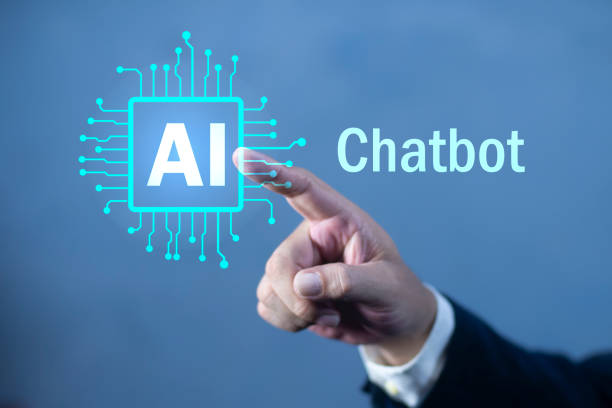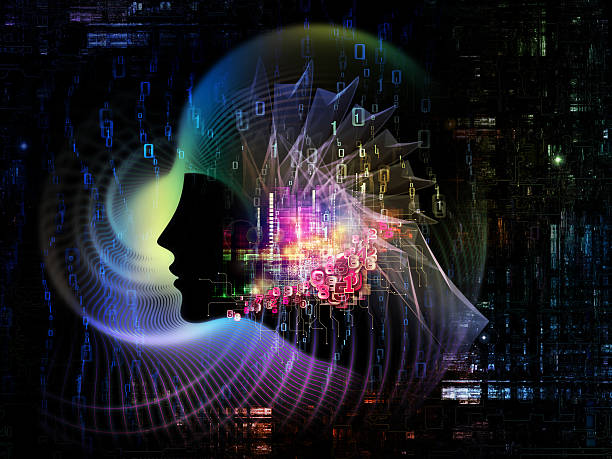What is an AI Assistant and Why is it Important?
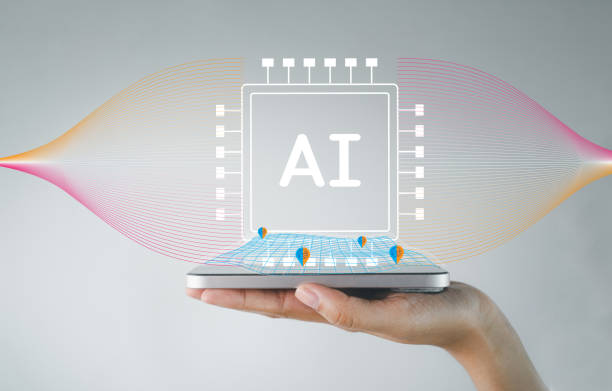
AI Assistant, or AI Assistant for short, is a software program that, by leveraging advanced #artificial_intelligence technologies such as #natural_language_processing and #machine_learning, is capable of performing various tasks, answering questions, and providing personalized assistance to users.
These smart tools are no longer confined to science fiction films and have become an integral part of our daily lives.
Their importance lies not only in increasing efficiency and personal convenience but also in playing a key role in the deep transformation of businesses and various industries.
AI assistants allow users to easily perform their tasks with voice or text commands, from organizing daily schedules to searching the internet and controlling smart home devices.
These smart tools have the ability to process vast amounts of data and can identify patterns and make decisions or predictions based on them.
AI assistants not only act as personal helpers but also play an effective role in professional environments, from customer support and project management to complex data analysis.
This technology becomes smarter with each interaction, improving its ability to understand user needs and provide more accurate responses.
Therefore, the importance of these assistants goes beyond a simple tool; they actually make artificial intelligence practical and accessible to everyone, laying the groundwork for a smarter future.
These explanations form the foundation of our understanding of this emerging technology.
Are you tired of your company’s website not meeting your expectations? With Rasawve, design a professional website that truly represents your business.
✅ Increase acquisition of new customers and sales leads
✅ Enhance your brand’s credibility and trust among your audience
⚡ Get a free website design consultation!
The Evolution of Smart Assistants from Past to Present
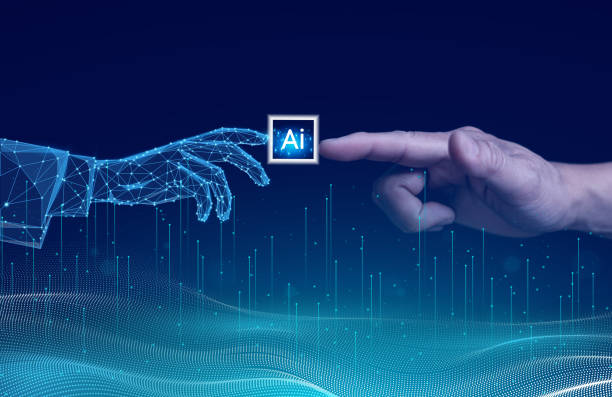
The evolution of #AI_assistant from a science fiction concept to a daily reality is a fascinating story of #new_technology innovation and progress.
Initially, early assistants operated mostly based on predefined rules and had limited ability to understand natural language.
Early examples like “ELIZA” in the 1960s were capable of simulating conversations but lacked true understanding or learning ability.
The greater transformation began with advances in Natural Language Processing (NLP) and Machine Learning (ML).
These advancements allowed AI assistants to not only recognize commands but also understand the meaning behind them and learn from new data.
The 2010s saw the emergence of popular voice assistants like Siri, Alexa, and Google Assistant, which brought #system_evolution capabilities literally into the hands of users.
These assistants gained the ability to do more than set alarms or play music; they could answer complex questions, control smart homes, and even help users with online purchases.
Today, AI assistants are present not only in smartphones and smart speakers but are also integrated into cars, home appliances, and even complex industrial systems.
This evolution signifies continuous progress, moving from rudimentary systems towards more sophisticated, intelligent, and multimodal assistants capable of better contextual understanding and providing more personalized responses.
These developments are not just #news but also an analytical testament to the exponential growth of artificial intelligence.
Types and Applications of AI Assistants in Life and Business
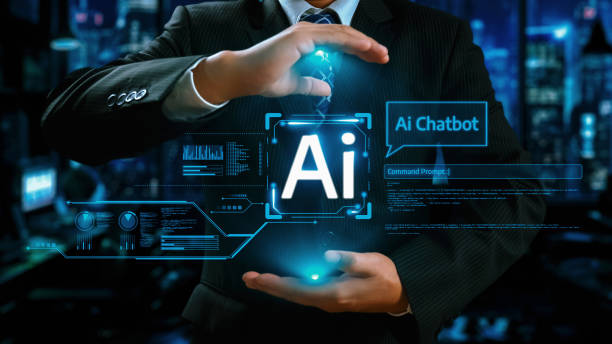
AI Assistants today appear in various forms and applications, from voice-based personal assistants to complex analytical systems in organizations.
This diversity indicates the wide extent of their penetration into our personal and professional lives.
#AI_assistant_types include voice assistants like Siri, Alexa, and Google Assistant, which simplify daily tasks; text-based assistants like chatbots used on websites for customer support or information gathering; and specialized assistants designed for specific industries, such as medical assistants for diagnosing diseases or financial assistants for market analysis.
In daily life, an AI assistant can help you set reminders, play music, control smart home devices, and even reserve a table at a restaurant.
These capabilities significantly increase #personal_productivity and make life easier.
In the business sector, the applications of AI assistants are much broader.
From providing 24/7 customer service and improving user experience through intelligent chatbots, to analyzing big data to identify consumption patterns and assist in strategic decision-making.
In the field of marketing, they can personalize campaigns; in finance, they can assess risks and provide investment recommendations; and in healthcare, to help doctors with more accurate and faster diagnoses.
These applications demonstrate the immense potential of AI assistants to transform industries and increase efficiency at an unprecedented level.
This section serves as a specialized and explanatory guide for better understanding these tools.
| Type of AI Assistant | Main Application | Famous Examples |
|---|---|---|
| Voice Assistant | Managing schedules, playing content, controlling smart home devices, information retrieval | Siri, Alexa, Google Assistant, Cortana |
| Text-based Assistant/Chatbot | Answering FAQs, customer support, content generation, online guidance | Website chatbots, text-generating AI assistants (like ChatGPT) |
| Specialized AI Assistant | Complex data analysis in specific fields (medical, financial, legal, design) | IBM Watson Health (medical), automated financial assistants, legal assistants |
| Visual AI Assistant | Face recognition, image processing, assistance with machine vision | Assistants for visually impaired people, smart surveillance systems |
How AI Assistants Work: Technical Foundations and Algorithms
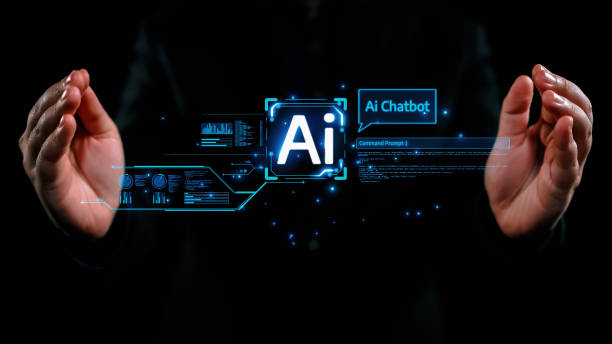
The complex yet fluid operation of #AI_assistant in the background is built upon the solid foundations of several advanced technologies and complex #algorithms.
The core of these assistants’ operation is Natural Language Processing (NLP).
NLP allows the AI assistant to understand, interpret, and even generate human language (both spoken and written).
This process includes analyzing sentence structure, recognizing keywords, and understanding the user’s intent.
After understanding the input, the next step is performed with the help of #machine_learning and especially deep neural networks.
Deep neural networks, which are inspired by the structure of the human brain, can identify complex patterns in data and make decisions based on them.
For example, when you ask an AI assistant to play a song, NLP understands your request, and then machine learning algorithms select and play the best option based on your listening history or song popularity.
Feedback systems also play an important role; each new interaction provides more data for the AI assistant to learn and improve its performance.
This continuous learning process enables assistants to become smarter over time, provide more accurate responses, and even make predictions based on past user behavior.
This section is entirely #specialized and #explanatory, addressing the technical aspects of this technology and revealing how they work.
Are you concerned about your e-commerce site’s low conversion rate and not achieving your desired sales?
Rasawve is your specialized solution for a successful e-commerce website.
✅ Significant increase in conversion rate and sales
✅ Professional and user-friendly design to attract customer satisfaction
⚡ Ready for a revolution in online sales? Get a free consultation!
Significant Advantages of Using a Powerful AI Assistant
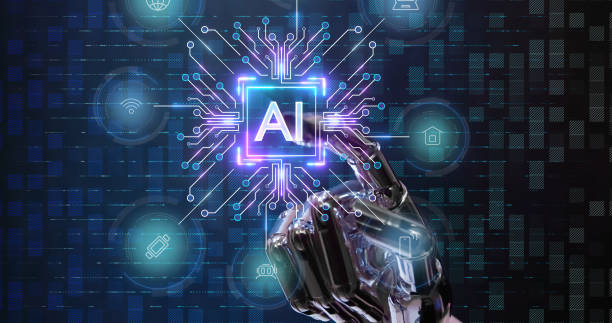
Using a powerful #AI_assistant brings countless benefits to individual users and businesses alike.
Perhaps the most prominent advantage is the significant increase in #productivity_gain.
AI assistants can automate repetitive and time-consuming tasks, including scheduling appointments, sending emails, managing calendars, and even answering frequently asked questions.
This automation allows users to focus their time and energy on more important and strategic tasks, leading to #time_saving and overall performance improvement.
Furthermore, an AI assistant can operate continuously and without interruption, a feature particularly valuable in the field of customer service.
By providing advanced customer service 24 hours a day, these assistants can help customers anytime, anywhere, leading to increased customer satisfaction and strengthened loyalty.
AI assistants are also capable of enhancing the user experience through personalization; by analyzing user data, they can provide more accurate and relevant recommendations, whether for products, news, or entertainment content.
This personalization not only makes the interaction more pleasant but also makes users feel that their needs are well understood.
These advantages clearly show how an AI assistant can profoundly transform our lives and work, and this section provides a comprehensive explanation of the benefits of this technology.
Current Challenges and Limitations of AI Assistants
![]()
Despite countless benefits, #AI_assistant still faces significant challenges and #technical_limitations.
One of the most important concerns is the issue of #data_privacy and information security.
AI assistants require large volumes of personal data to be effective, which can create risks in terms of privacy breaches or misuse of information.
This issue raises significant #contentious questions, especially in the current era where data is considered the new gold.
Another challenge is the issue of #algorithmic_bias.
AI assistants are trained on data collected and labeled by humans.
If this data contains biases (e.g., racial, gender, or social biases), the AI assistant may also provide discriminatory decisions or responses.
This bias can be unintended, but its results can have serious and unfair consequences.
Additionally, AI assistants still have limitations in understanding sarcastic language, humor, or the emotional complexities of human beings.
They are not yet capable of expressing creativity or abstract thought in a human way.
Over-reliance on AI assistants can also lead to a decrease in human cognitive and decision-making skills.
These limitations require continuous research and development so that AI assistants can operate more responsibly and ethically.
This analytical section helps us to look at the current capabilities of this technology with a more realistic view.
The Future of AI Assistants: New Horizons and Ethical Considerations
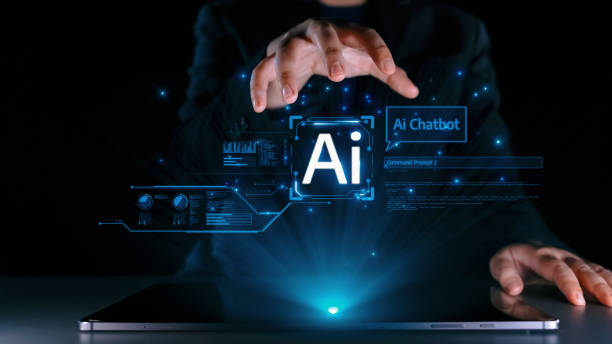
The future of #AI_assistant is full of amazing potentials and yet complex ethical challenges.
On the horizon, we will see assistants that are not only smarter but also more intuitive and proactive.
These assistants, based on behavioral patterns and predicted user needs, will be able to automatically perform tasks or provide information that the user needs even before asking.
Imagine an AI assistant that suggests an alternative route before heavy traffic or orders a product for you before it runs out.
These #future_trends are moving towards #ethical_AI.
However, these advancements also bring deep ethical considerations.
Issues such as accountability for AI assistant decisions (especially in sensitive areas like medicine or autonomous driving), the privacy of collected data, and avoiding algorithmic biases that can lead to discrimination are among these considerations.
Developing legal and ethical frameworks to guide the development and use of AI assistants is vital to ensure that this technology benefits humanity and not works against it.
The ultimate goal is an AI assistant that is not only efficient but also reliable and responsible, and ethically engages in #human_AI_collaboration.
This section covers both analytical aspects and #contentious issues and leads towards a smarter future.
| Area of Ethical Consideration | Main Challenge | Potential Solutions and Future Trends |
|---|---|---|
| Privacy and Data Security | Collection and use of sensitive data without consent or with risk of disclosure | Advanced encryption, Privacy by Design, transparent data laws |
| Algorithmic Bias and Fairness | Unfair or discriminatory decision-making due to biased training data | Diversity in training data, Explainable AI algorithms, independent audits |
| Accountability and Transparency | Lack of transparency in operation and difficulty in assigning responsibility in case of error | Traceability of AI decisions, clear legal frameworks, industry standards |
| Impact on Employment and Skills | Replacement of human jobs and need for workforce retraining | Investment in education and retraining, creation of new AI-related jobs, focus on human augmentation |
Guide to Choosing and Integrating a Suitable AI Assistant

Choosing and integrating a suitable #AI_assistant, whether for personal use or for a business, requires careful consideration of various #evaluation_criteria.
This process can be complex, but by following a few key steps, one can ensure the smartest choice.
First, clearly define your needs and goals.
Are you looking to increase personal productivity, or do you intend to improve your customer service? The answer to this question determines the type and capabilities required for the AI assistant.
The next step is to examine the core capabilities of the AI assistant.
Look for an assistant with strong #natural_language_processing, continuous learning capabilities, and easy integration with your existing systems.
Data security and privacy are also of paramount importance; ensure that your chosen assistant uses strong security protocols to protect information.
Cost, technical support, and scalability are also important factors to consider.
For businesses, it is recommended to start with a small pilot project to evaluate the AI assistant’s performance in a real-world environment.
Also, training employees for effective use of the assistant and preparing them for changes resulting from #smart_implementation is crucial.
This comprehensive and specialized guide helps you choose the best AI assistant for your needs and effectively integrate it into your ecosystem.
Did you know that 94% of a company’s first impression relates to its website design?
Rasawve with its professional corporate website design services helps you create the best first impression.
✅ Create a professional and trustworthy image for your brand
✅ Easier attraction of potential customers and improved online presence
⚡ Get a free corporate website design consultation!
Impact of AI Assistants on Various Industries and the Job Market

#AI_assistant is creating a widespread #industrial_transformation that affects almost every sector of the global economy.
In healthcare, AI assistants help doctors in faster disease diagnosis, patient record management, and even assist in complex surgeries.
In the automotive industry, smart assistants are integrated not only into advanced navigation and in-car entertainment systems but also play a vital role in the development of autonomous vehicles.
The financial sector sees the use of AI assistants for stock market analysis, fraud detection, and providing personalized financial advice.
These impacts indicate an increase in efficiency and a reduction in human errors.
In retail, AI assistants help increase sales and customer satisfaction by providing personalized product recommendations, improving the customer shopping experience, and managing inventory.
The impact of AI assistants on the #job_market is also significant.
While there are concerns about job displacement by AI, many analysts believe that AI assistants primarily act as complementary tools that enhance human efficiency and create new jobs in the development, maintenance, and training of AI systems.
This technology automates repetitive tasks and allows the workforce to focus on more creative and strategic work.
This analytical and #news section delves into how AI assistants impact the future of the economy and workforce.
AI Assistant and Personalized User Experience

One of the most powerful features of #AI_assistant is its ability to provide a #personalized_user_experience.
These assistants, by continuously analyzing user behavioral patterns, preferences, and past interaction history, can provide services and information tailored to each individual’s needs in an unprecedented way.
For example, an AI assistant can suggest a new playlist based on songs you’ve previously listened to, or recommend new products based on your purchase history that you’re likely to enjoy.
This personalized approach not only increases efficiency but also strengthens the sense of connection and mutual understanding between the user and the technology.
These capabilities apply not only to entertainment and content consumption but also to more serious fields such as education and healthcare.
An #educational_AI_assistant can adjust the curriculum based on each student’s learning pace and teaching style, providing immediate and personalized feedback.
In healthcare, it can send personalized medication reminders or provide health information based on an individual’s specific condition.
This level of personalization transforms interaction with technology from a generic process into a deeply unique and relevant experience.
This feature is one of the reasons why AI assistants are rapidly becoming an essential part of modern life, as they can accurately and efficiently meet individual needs.
This section mainly features entertaining and explanatory aspects and delves into the high potential of these assistants.
Frequently Asked Questions
| Number | Question | Answer |
|---|---|---|
| 1 | What is an AI Assistant? | An AI assistant is a software program that uses artificial intelligence to help users perform various tasks, provide information, or automate processes. |
| 2 | What are examples of AI assistants? | Famous examples include Siri, Google Assistant, Alexa, and Cortana. |
| 3 | How does an AI assistant work? | AI assistants typically use Natural Language Processing (NLP) to understand user voice or text commands and Machine Learning to improve their performance. |
| 4 | What capabilities does it have? | Capabilities include answering questions, setting reminders, playing music, sending messages, controlling smart devices, and providing weather information. |
| 5 | How is data security managed in AI assistants? | Data security is a major concern. Companies strive to protect user data using encryption and privacy policies, but users should always be aware of potential risks. |
| 6 | Can AI assistants understand emotions? | Currently, AI assistants cannot understand true emotions, but they can detect tone and words related to emotions and provide appropriate responses. |
| 7 | What are the applications of AI assistants in the workplace? | In the workplace, they can be used for scheduling meetings, managing emails, searching for information, and even assisting in drafting documents. |
| 8 | What will the future of AI assistants be like? | They are expected to be smarter, more personal, and have more capabilities in the future, actively anticipating user needs and even assisting in complex decision-making. |
| 9 | What is the difference between an AI assistant and a chatbot? | An AI assistant typically has a wider range of capabilities and interactions (often voice-based), while chatbots usually focus on specific tasks within a text-based platform. |
| 10 | How can one best use an AI assistant? | For optimal use, one should become familiar with its voice commands and capabilities, synchronize it with other devices, and allow it to learn your usage patterns through interactions. |
And other services of Rasa Web Advertising Agency in the field of advertising
Smart Marketplace: A fast and efficient solution for digital branding with a focus on optimizing key pages.
Smart Direct Marketing: Designed for businesses seeking to analyze customer behavior through SEO-driven content strategy.
Smart Customer Journey Map: Professional optimization for increasing click-through rates using Google Ad management.
Smart Digital Branding: A professional solution for analyzing customer behavior with a focus on SEO-driven content strategy.
Smart Content Strategy: Professional optimization for campaign management using attractive UI design.
And over hundreds of other services in the field of internet advertising, advertising consultation, and organizational solutions
Internet Advertising | Advertising Strategy | Advertorial
Sources
Artificial Intelligence and the Future of Smart Assistants
Smart Assistants: The Future of Technology
Review of AI Assistants and Their Future
The Role of AI Assistants in Our Lives
? For your business to soar in the digital world, Rasaweb Digital Marketing Agency, with expertise in fast and professional website design, SEO, and advertising campaign management, is ready to accompany you to achieve the best results.
📍 Tehran, Mirdamad Street, next to Bank Markazi, Kazerun Jonubi Alley, Ramin Alley, No. 6



